
Carcinus maenas: Information
- Subject:
- Life Science
- Zoology
- Material Type:
- Reading
- Provider:
- University of Michigan Museum of Zoology
- Provider Set:
- Animal Diversity Web
- Author:
- Chris Tutt (author), Southwestern University
- Date Added:
- 10/04/2000

Carcinus maenas: Information

This kit provides teachers and other educators with the materials and guidance to help fourth grade students understand the reasons that the British colonists elected to declare their independence from King George III between the years 1763-1776. As a part of these lessons students will be encouraged to consider the intent and impact of media documents from a variety of points of view including those of the colonists, King George, patriots, loyalists, slaves and Native Americans.
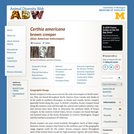
Certhia americana: Information
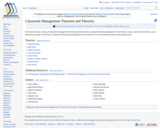
This book will study a variety of classroom management theorists and their theories, noting the historical background of the theorist, a basic overview of the theory, and a professional critique of the theory. It will also discuss practical applications for the theories for both elementary and secondary classrooms.
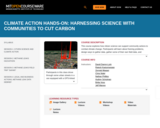
This course explores how citizen science can support community actions to combat climate change. Participants will learn about framing problems, design ways to gather data, gather some of their own field data, and consider how the results can enable action. Leaks in the natural gas system—a major source of methane emissions, and a powerful contributor to climate change—will be a particular focus.
The course was organized by ClimateX and Fossil Free MIT, with support from the National Science Foundation for the methane monitoring equipment. It was offered during the Independent Activities Period (IAP), which is a special 4-week January term at MIT.

Students are asked to make a general hypothesis about whether Atlantic hurricane have been changing over time in response to recent climate change. It is expected that at an introductory level with only the most basic background instruction, students will focus on numbers, locations, or intensities of hurricanes. Example hypotheses might be
The numbers of hurricanes are increasing (or decreasing)
Hurricanes are becoming more intense
Hurricanes are forming in new locations
Hurricane season is lengthening
They are then asked to develop more pointed questions that they can test. Some example questions for each hypothesis are given below:
Hypothesis 1 might lead to questions like "More hurricanes (or tropical storms) are forming each year" or "More hurricanes are striking land each year."
Hypothesis 2 might lead to questions such as "The maximum wind speed for hurricanes is increasing" or "The minimum barometric pressure is decreasing."
Hypothesis 3 might lead to questions like "Hurricanes are forming further north."
Hypothesis 4 might lead to questions such as "Hurricanes are forming earlier and later."
To answer these questions would require students to understand some background about hurricanes, like how many typically occur in the past (which leads to questions about data collection and observing hurricanes), how hurricane intensity is measured, or at what latitudes hurricanes typically form.
Then they are given a table or map data (derived from NOAA GIS data of hurricane tracks and intensity) to test their hypotheses.
The results of their inquiries and data collection will be shared with the class as parts of small groups initially, and will culminate as a small group presentation.
(Note: this resource was added to OER Commons as part of a batch upload of over 2,200 records. If you notice an issue with the quality of the metadata, please let us know by using the 'report' button and we will flag it for consideration.)

The content presented here provides module information, teaching materials and assessment details for module B74GS6 ‘Clinical Leadership and Management of Change’. This module is offered as part of the Post Graduate Diploma in Nursing Studies, Division of Nursing, University of Nottingham.
The content presented throughout includes module descriptions, lecture notes, workshop notes, case studies, clinical skills and reading lists provided to postgraduate students at the University of Nottingham.
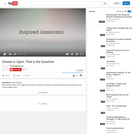
Instructional expert Jim Knight visits Chris Korinek to observe his social science classroom. Chris and Jim discuss scaffolding techniques, and when to use closed versus open questions.
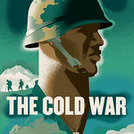
This unit leads students to create an overview of the Cold War, from 1945-1991. Students will work in groups of four, reading and researching the texts and web address provided. They will develop a timeline of the unit followed by generating Quizlet flashcards. The teacher will include Quizlet Live as a formative assessment by using links to each groups’ Quizlets for Quizlet live games.
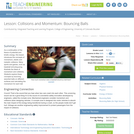
As a continuation of the theme of potential and kinetic energy, this lesson introduces the concepts of momentum, elastic and inelastic collisions. Many sports and games, such as baseball and ping-pong, illustrate the ideas of momentum and collisions. Students explore these concepts by bouncing assorted balls on different surfaces and calculating the momentum for each ball.

Make a whole rainbow by mixing red, green, and blue light. Change the wavelength of a monochromatic beam or filter white light. View the light as a solid beam, or see the individual photons.
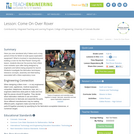
Have you ever wondered why it takes such a long period of time for NASA to build space exploration equipment? What is involved in manufacturing and building a rover for the Red Planet? During this lesson, students will discover the journey that a Mars rover embarks upon after being designed by engineers and before being prepared for launch. Students will investigate the fabrication techniques, tolerance concepts, assembly and field-testing associated with a Mars exploratory rover.
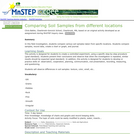
In this field investigation, students compare various soil samples taken from specific locations. Students compare samples, record data, create a chart or graph, and journal.

This course is offered to graduates and is a project-oriented course to teach new methodologies for designing multi-million-gate CMOS VLSI chips using high-level synthesis tools in conjunction with standard commercial EDA tools. The emphasis is on modular and robust designs, reusable modules, correctness by construction, architectural exploration, and meeting the area, timing, and power constraints within standard cell and FPGA frameworks.

This course introduces architecture of digital systems, emphasizing structural principles common to a wide range of technologies. It covers the topics including multilevel implementation strategies, definition of new primitives (e.g., gates, instructions, procedures, processes) and their mechanization using lower-level elements. It also includes analysis of potential concurrency, precedence constraints and performance measures, pipelined and multidimensional systems, instruction set design issues and architectural support for contemporary software structures.

This course introduces programming languages and techniques used by physical scientists: FORTRAN, C, C++, MATLAB®, and Mathematica. Emphasis is placed on program design, algorithm development and verification, and comparative advantages and disadvantages of different languages.

This textbook covers the traditional introductory Computer Science I topics but takes a unique approach. Topics are covered in a language-agnostic manner in the first part with supplemental parts that cover the same concepts in a specific language. The current version covers C, Java, and PHP. This textbook as been used in several Computer Science I sections over multiple years at the University of Nebraska-Lincoln.
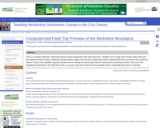
The intent is to provide a map-based framework, complete with animations showing the geologic evolution of the area to be visited, so that students can then better appreciate the observations made at the various stops along the way and see how they each relate to the other and the big picture.
(Note: this resource was added to OER Commons as part of a batch upload of over 2,200 records. If you notice an issue with the quality of the metadata, please let us know by using the 'report' button and we will flag it for consideration.)
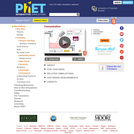
Watch your solution change color as you mix chemicals with water. Then check molarity with the concentration meter. What are all the ways you can change the concentration of your solution? Switch solutes to compare different chemicals and find out how concentrated you can go before you hit saturation!

As Conewago Valley School District advances its open educational resource (OER) adoption and implementation plan, OER Commons (https://oercommons.org) provides an OER toolset and immersive professional learning program to assist educators in enhancing their capacities to use, evaluate, curate, and create OER. Leveraging its teaching and learning network and digital library, OER Commons (oercommons.org) launched in 2007, ISKME advances collaboration and continuous improvement of high-quality curriculum.
Participants will get an opportunity to practice using OER tools and begin to design their plans for OER implementation, specific to their immediate OER needs. An important outcome for educators will be a shared understanding of OER practice and specific next steps for OER adoption in their work.
We will offer opportunities for learners to practice exploring the resources and tools, and reflect on how they might use them in their work.